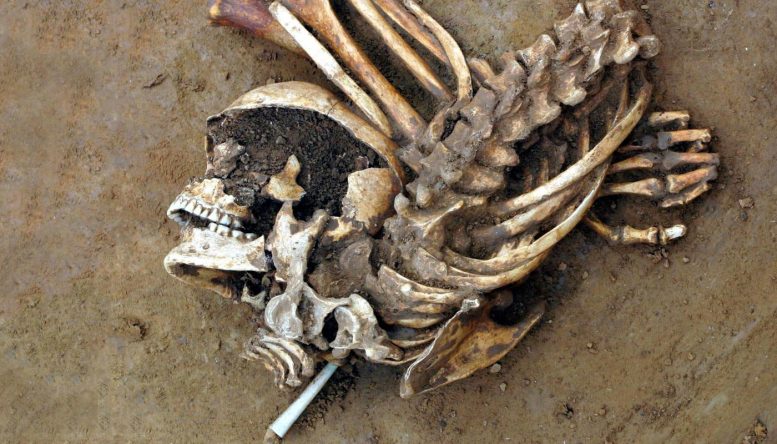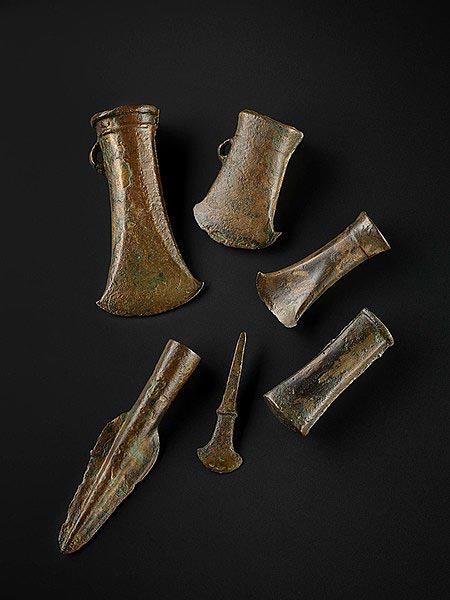Showing posts with label Harvard Medical School. Show all posts
Showing posts with label Harvard Medical School. Show all posts
Monday, July 24
Reverse Aging
Harvard researchers found a “chemical cocktail” that helped reverse aging in mice within a week by rejuvenating old cells within muscles, tissues, and some organs.
Aging and longevity expert David Sinclair, who is a researcher in the department of genetics and codirector of the Paul F. Glenn Center for Biology of Aging Research at Harvard Medical School, announced the findings on Twitter.
The results, published in the journal Aging this month, underscore aging as a process that can be reversed versus something inevitable. It adds to the growing interest in aging medicine, as people spend upwards of $100,000 per year at longevity clinics in the quest for the fountain of youth. CEO Bryan Johnson is known for his $2-million-a-year reverse-aging protocol.
“We’ve previously shown age reversal is possible using gene therapy to turn on embryonic genes,” Sinclair tweeted in a thread with over 1 million engagements. “Now we show it’s possible with chemical cocktails, a step towards affordable whole-body rejuvenation.”
In research over the course of three years, Sinclair and his team at Harvard observed mice taking six “chemical cocktails” that can reverse key hallmarks of aging by rejuvenating senescent or older, deteriorating cells “without erasing cellular identity,” according to the study. READ MORE...
Saturday, September 24
Code to Reverse Aging
PARIS — Barbra Streisand loved her dog Samantha, aka Sammy. The white and fluffy purebred Coton of Tulear was even present on the steps of the Elysée Palace, the French President’s official residence, when Streisand received the Legion of Honor in 2007.
As the singer and actress explained inThe New York Times in 2018, she loved Sammy so much that, unable to bring herself to see her pass away, she had the dog cloned by a Texas firm for the modest sum of 50,000 dollars just before she died in 2017, at the age of 14. And that's how Barbra Streisand became the happy owner of Miss Violet and Miss Scarlet, two puppies who are the spitting image of the deceased Samantha.
This may sound like a joke, but there is one deeply disturbing fact that Harvard Medical School genetics professor David A. Sinclair points out in his book Why We Age – And Why We Don’t Have To. It is that the cloning of an old dog has led to two young puppies.
This proves that DNA — ours as well as that of Sammy — has everything it takes to restore lost youth. This is a property that could be used to "reverse" aging without having to go through the problematic stage of cloning. READ MORE...
Wednesday, July 27
"TURN ON" Gene Causes Cancer
Researchers found that hypomethylating agents, a medication commonly used to treat myelodysplastic syndrome, could “turn on” the gene that causes cancer,
Hypomethylating agents (HMA) are currently used as a first-line treatment for individuals with myelodysplastic syndrome (MDS), a group of conditions where there is an inadequate generation of healthy mature blood cells in the bone marrow. However, the exact mechanism through which HMAs work is still unknown. Although this has not yet been completely proved, one possible concern is that they could activate a sleeping oncogene.
In a recent study, researchers from the National University of Singapore’s (NUS) Cancer Science Institute of Singapore (CSI Singapore) in close cooperation with Boston’s Brigham and Women’s Hospital (BWH) and Harvard Medical School (HMS) have shown that HMAs can and do activate the oncofetal protein SALL4.
The research was published in the academic journal New England Journal of Medicine and was also carried out in partnership with the University of Tor Vergata in Rome, Italy, and the Institute of Hematology and Blood Diseases Hospital in Tianjin, China.
Turning on the gene that causes cancer
SALL4 is a known oncogene, and the expression of SALL4 has been found to contribute to the development of MDS and leukemia. A study conducted by another research group in 2016 demonstrated that SALL4 activation in a liver cancer cell line was associated with hypomethylation.
Professor Daniel Tenen from CSI Singapore and his team demonstrated in 2021 that hepatitis B virus induced SALL4 demethylation in liver cancer through an RNA mediated mechanism. To examine possible upregulation of oncogenes in patients being treated with hypomethylating agents, Professor Tenen’s team collaborated with the other groups to study the association between HMA utilized and SALL4 activation, as well as the implications on survival outcomes. READ MORE...
Friday, July 15
DNA Analysis of Micronesians
Micronesia is defined as a country and has been a much-ballyhooed friend in need for Israel at the United Nations. It actually consists of roughly 2,000 small islands spread over a vast region in the Pacific.
Micronesia should not to be confused with the neighboring nations of Polynesia or Melanesia, which also consist of small islands in the Pacific. Now, a new study casts light on the origin of early Micronesians and it is more complicated than had been assumed.
It had been thought that Micronesians shared origins with southwest Pacific peoples, and that Micronesians likely stemmed from a single origin.
It had been thought that Micronesians shared origins with southwest Pacific peoples, and that Micronesians likely stemmed from a single origin.
Now, analysis of ancient and modern Micronesian DNA has detected five separate waves of migration to Micronesia in antiquity: three streams from eastern Asia, one from Polynesia, and one of people related to mainland Papua New Guineans, Yue-Chen Liu and David Reich of Harvard Medical School reported with colleagues last week in Science.
The three streams of “first remote Oceanian” migration into Micronesia included a previously unknown lineage, the team adds.
The study is based on genomic analysis of 164 people who lived 2,800 to 500 years ago at five sites around Micronesia, and 112 genomes of present-day people from the same areas. READ MORE...
The three streams of “first remote Oceanian” migration into Micronesia included a previously unknown lineage, the team adds.
The study is based on genomic analysis of 164 people who lived 2,800 to 500 years ago at five sites around Micronesia, and 112 genomes of present-day people from the same areas. READ MORE...
Friday, January 7
Ancient DNA Analysis

A photograph of the skeleton of one of the four individuals who we have sequenced who we think is likely to have participated in the migration we detect into southern Britain and to have displaced half the ancestry of the local population. This skeleton was excavated from the site of Cliffs End Farm in Kent. Credit: Wessex Archaeology
A major new study of ancient DNA has traced the movement of people into southern Britain during the Bronze Age.
A major new study of ancient DNA has traced the movement of people into southern Britain during the Bronze Age.
In the largest such analysis published to date, scientists examined the DNA of nearly 800 ancient individuals
The new study, led by the University of York, Harvard Medical School, and the University of Vienna, shows that people moving into southern Britain around 1300‒800 BC were responsible for around half the genetic ancestry of subsequent populations.

A major new study of ancient DNA has traced the movement of people into southern Britain during the Bronze Age.
A major new study of ancient DNA has traced the movement of people into southern Britain during the Bronze Age.
In the largest such analysis published to date, scientists examined the DNA of nearly 800 ancient individuals
The new study, led by the University of York, Harvard Medical School, and the University of Vienna, shows that people moving into southern Britain around 1300‒800 BC were responsible for around half the genetic ancestry of subsequent populations.

This image is of bronze age tools from the National Museums of Scotland, which could give readers a sense of the material culture associated with people who lived at the time of the migration. Credit: Bronze Age tools curated the National Museums of Scotland
The combined DNA and archaeological evidence suggests that, rather than a violent invasion or a single migratory event, the genetic structure of the population changed through sustained contacts between mainland Britain and Europe over several centuries, such as the movement of traders, intermarriage, and small scale movements of family groups.
The study finds evidence that the new migrants became thoroughly mixed in to the Southern British population in the period 1000‒875 BC.
The researchers say the origin of these migrants cannot yet be established with certainty, but they are most likely to have come from communities in and around present-day France.
The Middle to Late Bronze Age was a time when settled farming communities expanded across the landscapes of southern Britain, and extensive trade routes developed to allow the movement of metal ores for the production of bronze.
These new networks linked wide-ranging regions across Europe, as seen from the spread of bronze objects and raw materials.
The study’s lead archaeologist Professor Ian Armit, from the University of York, said: ‘We have long suspected, based on patterns of trade and shared ideologies, that the Middle to Late Bronze Age was a time of intense contacts between communities in Britain and Europe. READ MORE...
The combined DNA and archaeological evidence suggests that, rather than a violent invasion or a single migratory event, the genetic structure of the population changed through sustained contacts between mainland Britain and Europe over several centuries, such as the movement of traders, intermarriage, and small scale movements of family groups.
The study finds evidence that the new migrants became thoroughly mixed in to the Southern British population in the period 1000‒875 BC.
The researchers say the origin of these migrants cannot yet be established with certainty, but they are most likely to have come from communities in and around present-day France.
The Middle to Late Bronze Age was a time when settled farming communities expanded across the landscapes of southern Britain, and extensive trade routes developed to allow the movement of metal ores for the production of bronze.
These new networks linked wide-ranging regions across Europe, as seen from the spread of bronze objects and raw materials.
The study’s lead archaeologist Professor Ian Armit, from the University of York, said: ‘We have long suspected, based on patterns of trade and shared ideologies, that the Middle to Late Bronze Age was a time of intense contacts between communities in Britain and Europe. READ MORE...
Subscribe to:
Comments (Atom)



